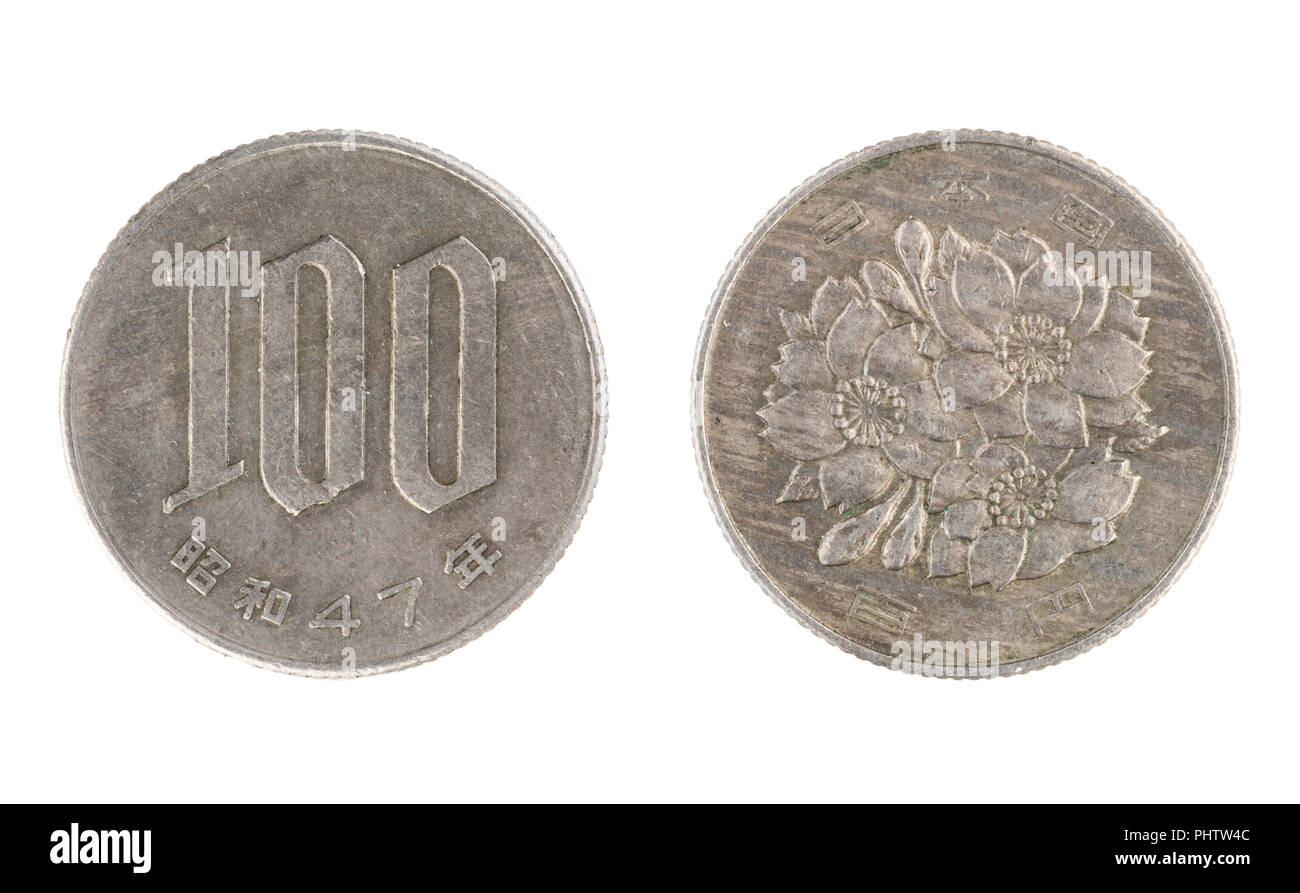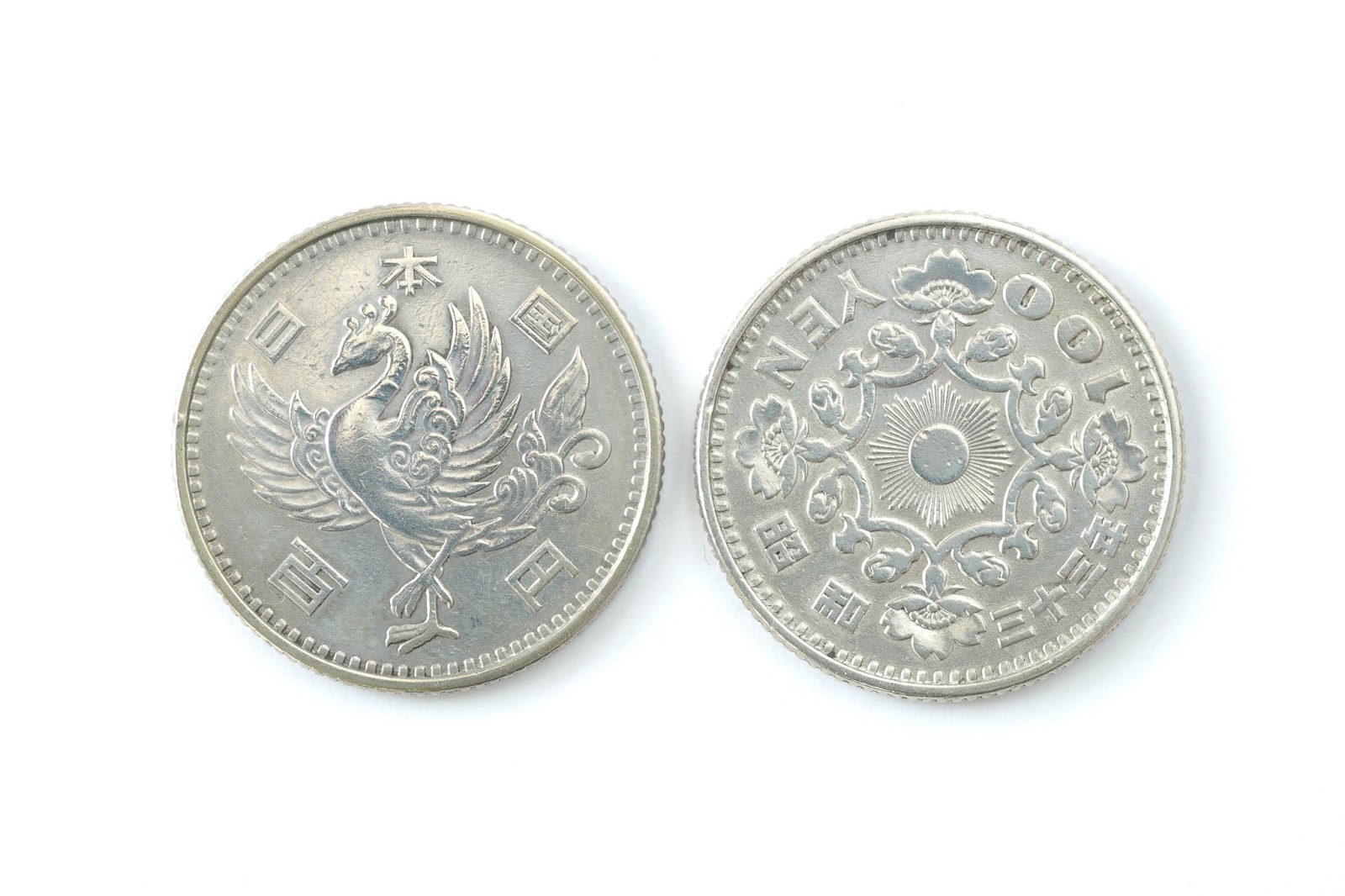100 Yen Coin
The 100-yen coin is a subsidiary coin issued by the Japanese government. It is called 'hyaku en koka' or 'hyaku en dama' in Japanese. The Japan Mint defines that the side on which the year is marked is the tail side for convenience sake, however, unlike coins from the Meiji period, the 100-yen coin legally has no head or tail.

The 100-yen cupronickel coin
This is the 100-yen coin that is currently issued. On the head side are the designs for 'Japan', '100 yen' (both in kanji) and Japanese cherries, and on the tail side is the number '100' and the year of manufacture. On the lateral side, there are 103 knurls. For the character for '100,' a design similar to the character for '50' on current 50-yen coin is used.
100 Yen Coin To Usd
Detailed information about the coin 100 Yen, Shōwa, Japan, with pictures and collection and swap management: mintage, descriptions, metal, weight, size, value and other numismatic data. These coins are made of copper nickel and are worth face value (100 yen in Japan). Use a web site such as xe.com to convert currency values. Should you have a specimen that is absolutely, fully uncirculated, a collector would probably pay a few US dollars over face value to add it to his or her collection.
The 100-yen silver coin
In 1957, the 100-yen silver coin was issued with the design of a 'Hoo' (a mythological sacred bird in Chinese lore, a phoenix) as the first silver coin minted after the war. The cost of manufacturing at that time was said to be 43 yen. In 1959, the design was changed to ears of rice while the weight and composition were unchanged. At the same time, the design of the 50-yen coin was also changed and both designs were sought from the public.

Detailed information about the coin 100 Yen, Heisei, Japan, with pictures and collection and swap management: mintage, descriptions, metal, weight, size, value and other numismatic data. Showa year 48 100-yen Japanese coin On recent 50- and 100-yen coins (since 1967), the era year is shown in Arabic numerals instead of Japanese numerals, like the coin pictured here. The rest of the date is read the same way described above - counter-clockwise, starting with the era name and ending with the year symbol (年).

The content of silver in these two types of 100-yen silver coins is 0.600. As of 2008, the value of silver hovers around 50 yen per gram. Assuming it is 50 yen, the price of silver contained in a 100-yen silver coin is (50x4.8x0.6) 144 yen, which exceeds the face value. If the value of silver were to go even higher, there is a potential risk that the coin will become subject to illegal acts against the Act on Control of Damaging and Other Acts Related to Coins.
Also refer to Japanese silver coins.
2010 100 Yen Coin
Transition
1957: The 100-yen silver coin was issued.
1959: Design of The 100-yen silver coin was changed from hoo to ears of rice.

Japan 100 Yen Y 82 Prices & Values NGC
1967: Current 100-yen cupronickel coin was issued.